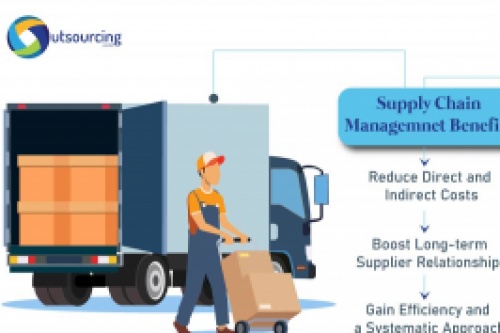Finding the proper vendors has risen to the top of procurement teams' priorities as companies put more emphasis on controlling expenses.
Strategic sourcing is therefore changing how organisations think about buyer-supplier relationships since it focuses on increasing value and lowering risk through vendor collaborations.
In answer to the question that “Does strategic sourcing is the comprehensive procurement approach?”
It is a “yes” strategic sourcing is crossing the the boudary of traditional procurement. The discipline of strategic sourcing, which includes expenditure analysis, data-driven supplier selection, and continuing interaction with vendor partners, is expanding.
The strategy, which was initially embraced by big businesses to measure and boost vendor return on investment (ROI), is now commonplace among businesses of all sizes.
Businesses of all sizes are now able to gather and compare a wide range of competitive data.
Even though the thorough approach of strategic sourcing contributes significantly to its value, it is challenging to pinpoint a single aspect that directly causes procurement savings.
Organizations who use strategic sourcing, however, note a number of advantages.
Strategic Sourcing Principles For Supply Chain
Making choices based on overall value
Relationships between partners are preferable to transactions
Takes into account overall cost of ownership
Ranks the most crucial components of a vendor's offer in priority
Demonstrates the importance of the purchasing department of sourcing procurement.
When Is Strategic Sourcing A Good Option?
Strategic sourcing clearly has advantages, but not every procurement project is a good fit for it. After all, the procedure is undoubtedly difficult and oftentimes time-consuming. Simply put, some tasks don't need that much specificity.
Therefore, it's crucial to strike a balance between the cost of the item being purchased and the time commitment needed to carry out a strategic sourcing operation.
Projects that match well with strategic sourcing are:
High value, well defined, and crucial to the business
Intricate and specialized
Having high stakes and involving organizational transformation
Examples of circumstances for strategic sourcing
1. Choosing a new customer relationship management program
2. Assessing the value of financial services or employee perks
3. Hiring a design studio for a new building project
Scenarios That Are Better Suited To Alternative Procurement Approaches
There are some circumstances that just won't be a suitable fit for the procedure due to the detail and time needed for strategic sourcing.
Finding a project management solution for a single department is an example of a low value, low risk procurement.
When there is a strong preference for a specific provider, collecting bids to satisfy policy criteria
Try an RFP light for a normal, transactional purchase of office supplies.
Consider making a request for information while gathering information, determining costs, and arranging a future purchase (RFI)
Try a request for credentials to find the ideal expert to consult on a marketing effort (RFQ)
Obtaining the best deal on a simple buy — Take into account a request for quotations (RFQ)
How to Make the Change to Strategic Sourcing
You will walk through the strategic sourcing cycle, starting with expenditure analysis, supplier selection, and continuous engagement, as you find purchases or existing vendor relationships that are a suitable fit for the strategy.
Cost analysis
Describe how you are right now.
Decide on requirements and objectives.
Investigate options
supplier choice
Competencies and the customer landscape
Use Strategic Sourcing To Your Advantage
In the end, strategic sourcing is the procedure of gathering information, working with the finest vendors, and assuring continued value and efficiency in procurement. It looks beyond simple, transactional purchases and concentrates on the larger picture, or how to aid in the accomplishment of the organization's objectives.
The intricacies of strategic sourcing will unavoidably vary from one firm to another. Fortunately, you may begin your strategic sourcing efforts with a single project.
FAQ
1. Are sourcing and strategic sourcing same terms?
The main distinction between sourcing and strategic sourcing is that the former focuses primarily on supplier pricing, while the latter takes a more dynamic and all-encompassing approach, taking into account a hierarchy of other corporate needs, including supply assurance, service, quality, innovation, and regulatory compliance—none of which can be compromised for a lower price alone.
2. What makes strategic sourcing crucial?
When it comes to a company's cost structure and competitiveness, strategic sourcing plays a significant role by looking at the Total Cost of Ownership rather than simply the purchase price.
Analyzing large-scale purchases and forging long-term strategic supply alliances with suppliers may both significantly reduce costs and enhance quality and dependability. By continuously lowering costs while raising service quality, strategic sourcing aids in improving the value to price relationship.
3. What are strategic sourcing's primary steps?
Below are a few of the crucial actions in strategic sourcing. While not exhaustive, the following list ought to provide a general idea of what strategic sourcing entails:
Create profiles for the major expenditure categories.
Examine the supply chain for important commodities.
Establish company needs and priorities.
Create the sourcing plan.
Set KPIs for supplier performance.
Describe the strategic sourcing procedure in detail
Engage, bargain with, and contract with strategic suppliers
Integrate and use strategic sourcing
Monitoring, benchmarking, and ongoing improvement
4. What are the top 5 strategic sourcing processes?
Ans: This adequately prepares a business for contract discussions.
Contract Management: All of the company's contracts are being centrally managed through this organizational procedure, which also clarifies their terms and determines when they are due.
Many businesses let their numerous vendor contracts expire without keeping track of them, which has negative effects including paying for obsolete technology.
Utilization Management: A growing corporation does business swiftly. There is a huge need for expansion. Technology is always evolving, and as processing power doubles on a regular basis, businesses can accomplish more with less.
Due to this, it is common for businesses to pay (in accordance with the terms of their contracts) for empty data center space or for technology they previously employed on an outdated platform.
Vendor Strategy Development: The business can find possibilities to create a consistent rate schedule and consolidate to a small number of essential providers by adopting a strategic perspective of this expense.
Preferred vendors are appreciative of their standing and offer better service, all the while the business spends, on average, 15% less for temporary resources.
Spend Aggregation: Spend aggregation not only improves cost dramatically but also speeds up the procurement process. A corporation may set up a fair, beneficial, equitable, pre-determined timetable with the supplier instead of having to make calls and negotiate all those little transactions.
Objectively Informed Negotiation: Returning to the historical ties with suppliers, the majority of vendors are unfamiliar with a corporation that is objective about the larger market. That can be used very effectively.
Without this kind of market knowledge, sellers may easily persuade businesses that they're receiving a good price, even if that may not always be the case.
5. What are the challenges of strategic sourcing?
Ans: The top 4 difficulties in the strategic sourcing process
Accurate demand forecasting. It's crucial since understocking might result in customer loss while overstocking uses up space and ties up cash.
Margin control.
controlling suppliers
directing the buying process.












